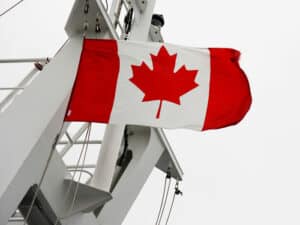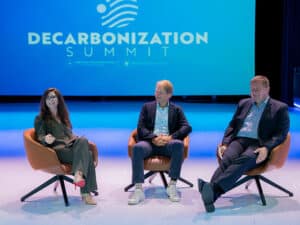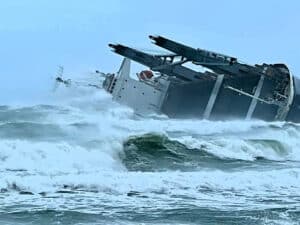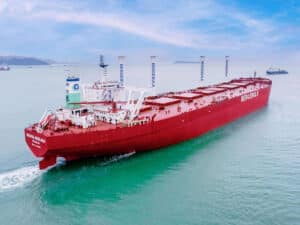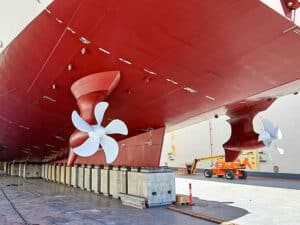
Supply vessel to be converted to operate on ammonia fuel cells
Written by Nick Blenkey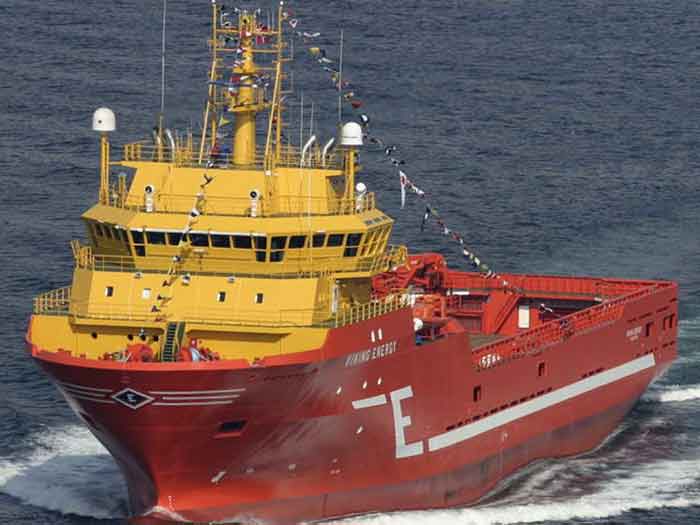
Viking Energy was a natural choice for the ammonia fueling project. She the world’s first supply vessel powered by LNG when delivered in 2003, then in 2016 she also became the world’s first hybrid supply vessel. (Image: Eidesvik Offshore)
Equinor has signed an agreement with Eidesvik Offshore that will see the North Sea supply vessel Viking Energy modified to enable it to cover long distances powered by carbon-free ammonia fuel cells.
The vessel will transport supplies to installations on the Norwegian continental shelf (NCS) under a five-year contract that will take effect from April 2020, when its current contract expires.
During the contract period, the Viking Energy will be the test bed for a research project developing, installing and testing long-distance sailing fueled by ammonia fuel cells. The technology will be tested on the vessel from 2024.
“Together with Equinor, we are now launching a full-scale research project to test a propulsion solution based on fuel cells running on pure and emission-free ammonia,” says Jan Fredrik Meling, CEO of Eidesvik Offshore. “The goal is to install fuel cell modules with a total power of 2 MW on board Viking Energy in 2024. This will make the vessel the world’s first emission-free supply vessel.”
Hydrogen and ammonia are widely considered the two main zero emission fuel candidates for future shipping, with many believing that ammonia represents the best option for longer voyages, such as the North Sea supply routes, where ships need to carry large amounts of fuel.
“In the industry, ammonia is reckoned a major part of the solution to reduce the climate footprint from offshore traffic and other shipping segments. We also share that view,” says Vermund Hjelland, Vice President of technology and development at Eidesvik Offshore.
EU FUNDING SUPPORT
The project is being support with EUR 10 million (about $11 million) of funding from the EU’s Horizon 2020 program, awarded through the ShipFC project, a consortium of 14 European companies and institutions, co-ordinated by the Norwegian cluster organization NCE Maritime CleanTech.
The other main partners in the five-year research project are Wärtsilä, supplying the power technology and systems for ammonia storage and distribution, and Prototech, supplying the fuel cell system.
Norwegian fertilizer company Yara has been contracted to supply the green ammonia used in the fuel cells, which will be produced by electrolysis and delivered to Viking Energy containerized to enable easy and safe refuelling.
“Eidesvik and Wärtsilä have had a particularly close industrial collaboration for a number of years,” says Hjelland. “Wärtsilä has provided technology solutions throughout Eidesvik’s development stages, from LNG in 2003, via fuel cell and hybrid solutions, and up to today’s focus on ammonia. The collaboration with Wärtsilä has been very important in getting to where we are today.” Hjelland confirms.
“As part of the testing, the vessel will use ammonia in transit between harbor and offshore installations for one year. In addition, we envisage that ammonia will be used to power the vessel when alongside quay. Our ambition is that 60 to 70 percent of the energy consumption will come from ammonia during the test period. In addition, we want to demonstrate that the technology can supply up to 90 per cent of the total power demand,” Hjelland says. He adds that the remaining energy consumption on board will be powered by LNG, which has been Viking Energy’s main fuel since 2003.
Having Viking Energy as the test vessel for the ammonia fueling project was a natural choice. Not only was she the world’s first supply vessel powered by LNG when delivered in 2003, but in 2016 she also became the world’s first hybrid supply vessel with class notation “Battery Power” from DNV GL.

